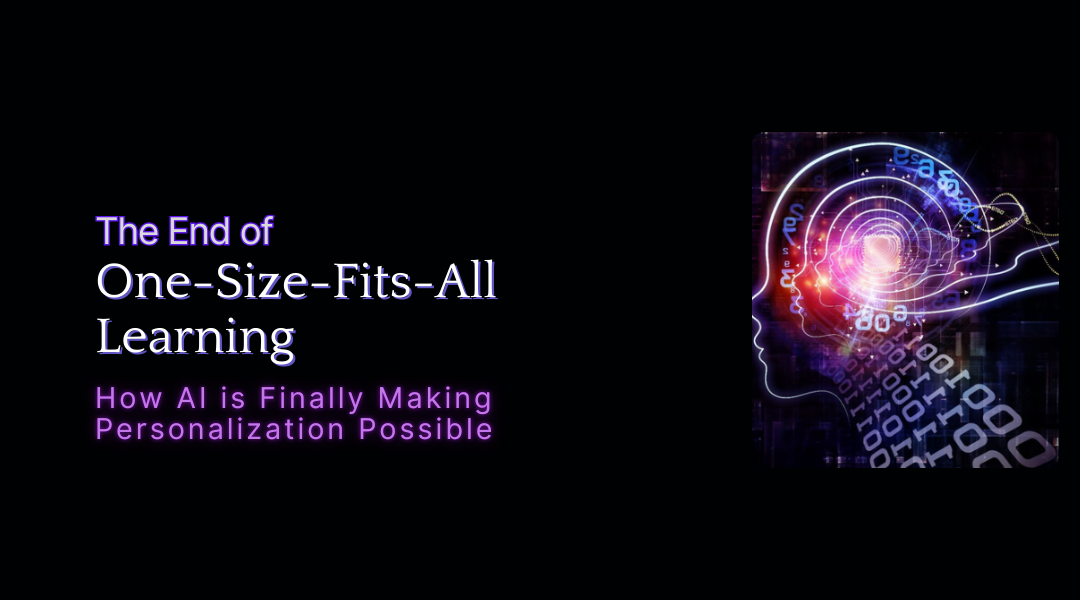For centuries, education has operated on a factory model: same lesson, same pace, same test for everyone. We’ve always known this is ineffective. Students are not widgets; they each have unique minds, with different strengths, interests, and ways of processing information. The dream of truly personalized learning—tailoring education to fit each child—has long felt out of reach for a single teacher managing a classroom of thirty.
Now, that’s changing. AI technologies like DeepSeek are not about replacing teachers; they’re about finally giving them the tools to see and respond to each student as an individual. This is the move from mass production to bespoke education.
How It Works: The AI as a Diagnostic Partner
Think of DeepSeek not as a teacher, but as a super-powered teaching assistant that handles the data. Its power lies in its ability to quietly observe, analyze, and diagnose learning patterns at a granular level that humans simply cannot.
- Mapping the Learning DNA: The system doesn’t just see a student’s test score. It analyzes how they learn. Does a student consistently pause and rewatch video explanations? (A visual learner.) Do their quiz scores jump after participating in a group discussion? (An auditory/social learner.) Do they perform best on interactive simulations? (A kinesthetic learner.) DeepSeek builds a dynamic learning style profile that evolves with the student.
- Predicting the Hurdles: Using predictive analytics, the system can flag potential problems before they become crises. It might notice that a student who struggled with fractions last year is now starting a unit on algebra. It automatically recommends a targeted “Fractions Refresher” module to preemptively fill that knowledge gap, preventing frustration and failure down the line.
- Adaptive Assessment: Gone are the static tests where everyone answers the same questions. With adaptive assessments, the test itself changes in real-time. If a student answers a question on photosynthesis correctly, the next question is harder, probing the depth of their understanding. If they get it wrong, the next question is simpler, diagnosing the precise point of confusion. The result isn’t just a grade; it’s a detailed learning map.
The Classroom Transformation: From Broadcaster to Conductor
This influx of precise data fundamentally changes the teacher’s role from a broadcaster of information to a conductor of learning.
- The End of Guesswork: Instead of wondering, “Why is Sarah failing this unit?” the teacher opens a dashboard. It shows that Sarah understands the concepts during class discussions (auditory strength) but consistently fails the written quizzes (visual/reading weakness). The recommendation: provide Sarah with a video summary of the lesson and graphic organizers to help her process the information visually. The intervention is specific and evidence-based.
- Strategic Grouping: The AI can help teachers form dynamic groups not based on perceived ability, but on complementary learning styles or needs. It might suggest grouping a student who is a strong conceptual thinker but a weak writer with a student who is a clear written communicator for a project, allowing them to leverage each other’s strengths.
- Reclaiming Time for Connection: By automating the tedious work of grading routine assignments and diagnosing basic learning gaps, the AI gives teachers back their most valuable resource: time. This time is reinvested into what matters most—one-on-one mentoring, leading rich Socratic seminars, and providing deep, meaningful feedback on complex student work.
Real-World Magic: What This Looks Like in Practice
- For a Student Struggling with Reading: The AI notices a student skips over unknown words. It doesn’t just flag them as a “struggling reader.” It gently intervenes by embedding interactive vocabulary tools into their digital text, provides audio narration at a slower pace, and recommends books on the same topic but at a slightly lower reading level to build confidence.
- For an Advanced Student: A student breezes through the standard math curriculum. Instead of just giving them more problems, the AI identifies their interest in architecture and generates a custom project: “Use geometric principles to design a scale model of a sustainable house,” complete with curated resources and project milestones.
Navigating the Pitfalls: Data, Bias, and Human Touch
This powerful tool requires careful handling.
- Data with a Purpose: Schools must have a clear, ethical covenant on student data. It should be used solely to help the child learn, never to label or limit them. Parents and students deserve full transparency about what data is collected and how it’s used.
- The Bias Blind Spot: An AI trained on historical data can inherit historical biases. It might unconsciously steer boys toward STEM and girls toward humanities based on past patterns. The solution is continuous auditing by diverse educators to ensure the AI’s recommendations are fostering equity, not undermining it.
- The Irreplaceable Human: The biggest mistake would be to let the algorithm dictate everything. The teacher’s role becomes more crucial than ever—to interpret the AI’s data with empathy, to understand the child’s life beyond the data (a bad test score might be because of a sleepless night, not a knowledge gap), and to provide the encouragement and inspiration that no machine can.
Conclusion: The Personalized Learning Promise, Fulfilled
The integration of AI like DeepSeek represents the long-awaited death of the industrial education model. It moves us from a system that asks, “How smart is this student?” to one that asks, “How is this student smart?”
This isn’t about using technology for technology’s sake. It’s about using it to make education more fundamentally human—more responsive, more adaptive, and more focused on the unique potential of every single learner. The ultimate goal is a classroom where no child is bored because the work is too easy, and no child is lost because the pace is too fast. It’s a future where every student is seen, understood, and challenged to become the best version of themselves. And that is a revolution worth building.
